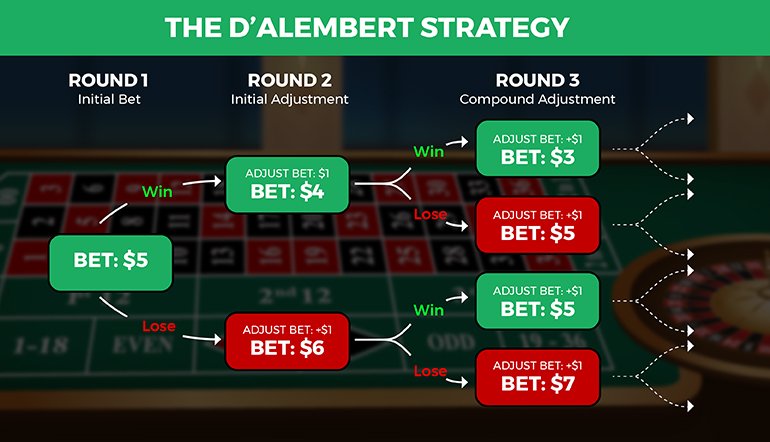Roulette systems might not guarantee a win in this popular gambling game, but they can help keep your bets under control and reduce the risk of losing big.
The d’Alembert System

d’Alembert is one of the most used strategic systems when playing roulette
Although the d’Alembert principle is mainly used in mathematical calculations, it can also be quite easily applied as a betting system in roulette. With its help, the game is not only more fun and faster because players know exactly what steps await them next, but it also helps reduce the risk of losing a larger amount of money. If you don’t want your losses to get out of hand during play, it’s definitely worth following one of the roulette systems.
Detailed information about roulette
History of the d’Alembert system
This principle was discovered by the French physicist, mathematician, enlightened philosopher, and esteemed member of prestigious science academies Jean le Rond d’Alembert, who lived from 1717 to 1783 in Paris. Although he studied law, he excelled most in mathematics. He published many significant works and received numerous awards. His name gained great recognition and thanks to the system, which can also be applied in roulette, it became known to many people.
Principle of the d’Alembert system
Players who want to play roulette according to this system place so-called even bets during the game. They bet on color, low/high or even/odd numbers, which are paid out at a 1:1 ratio. The essence of this strategy is betting a number of units according to the basic rule. If the player wins, the number of units bet is reduced (or kept the same). In case of a loss, higher amounts are bet until they win again.
How to play according to the d’Alembert system
The game always starts with betting one unit on red or black. If the player wins in the first round, the series ends and in the next round they bet only one unit (this can be €5, €10 or any other amount the player sets as the base bet). As long as they keep winning, they always bet just one unit. The change comes when they lose their bet. In case of a loss, the player increases their bet by one unit in the next round. Instead of one unit, they bet two. And this continues until they win again. With each loss, one unit is added to the bet, and with each win, one unit is subtracted. If they encounter a series of losses, their betting sequence increases directly with the number of lost rounds and when Lady Luck smiles on them, they reduce the bets until they return to one unit or lose all their money (chips).
Advantages of the d’Alembert system
The main advantages this principle offers to players include a conservative betting method. Even if a player experiences a very unfavorable series of losses, they take on much less risk compared to players who choose to bet according to the Martingale system, where bets are doubled with each loss. Additionally, if a player has a strictly defined budget they are willing to put into play, they can leave the game once they approach its depletion and always have the option to change their strategy.
Disadvantages of the d’Alembert system
Although this principle is set up so that players have a 50% chance of winning, in the long term, the advantage is on the side of the casino or game operator. Since this principle involves even bets, players’ winnings are not very high, and if they want to achieve a larger sum, they need to spend much more time playing and also have the luck of a long winning streak, which is very unlikely.
When to use this system
Although it is not a guaranteed way to get rich in the casino, this system is especially useful for players who want to get acquainted with roulette. By betting according to the d’Alembert principle, they always have their bets firmly under control and know what their next step will be in case of a win or loss. It is very easy to ensure they do not lose more money than they want to during play. However, it is also suitable for seasoned professionals. This system is suitable for both roulette novices and experienced players.







Discussion, comments and your experiences
Share your opinion, ask a question, or offer advice to others in the moderated discussion. Editors also participate, but they respond based on their current availability. If you expect a direct response, we recommend using email communication instead.